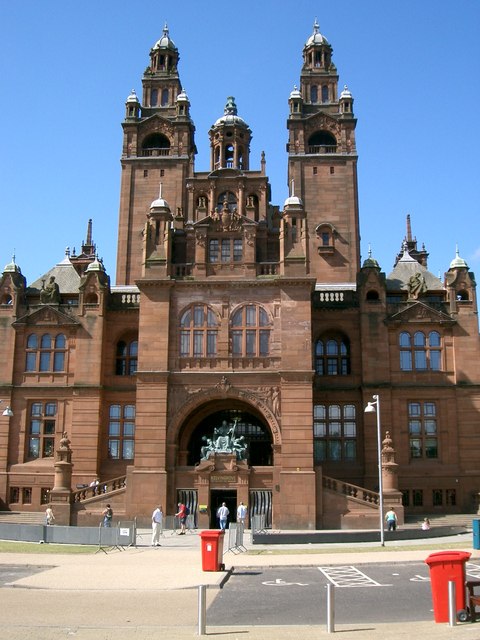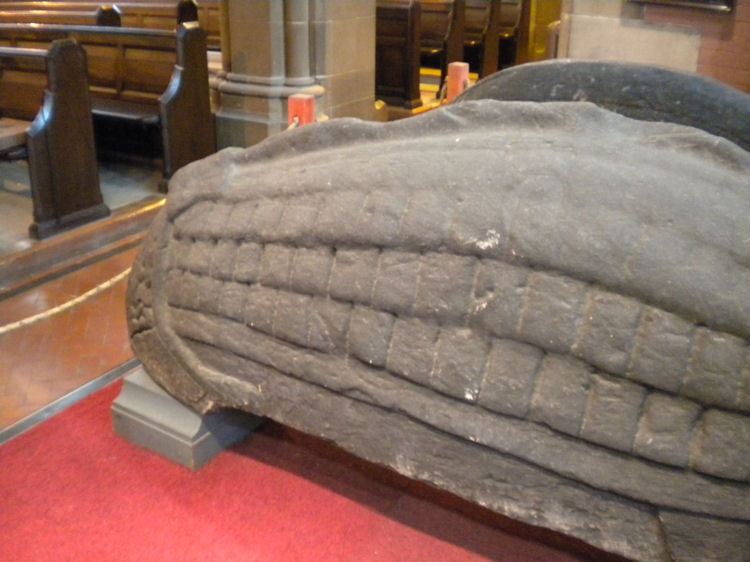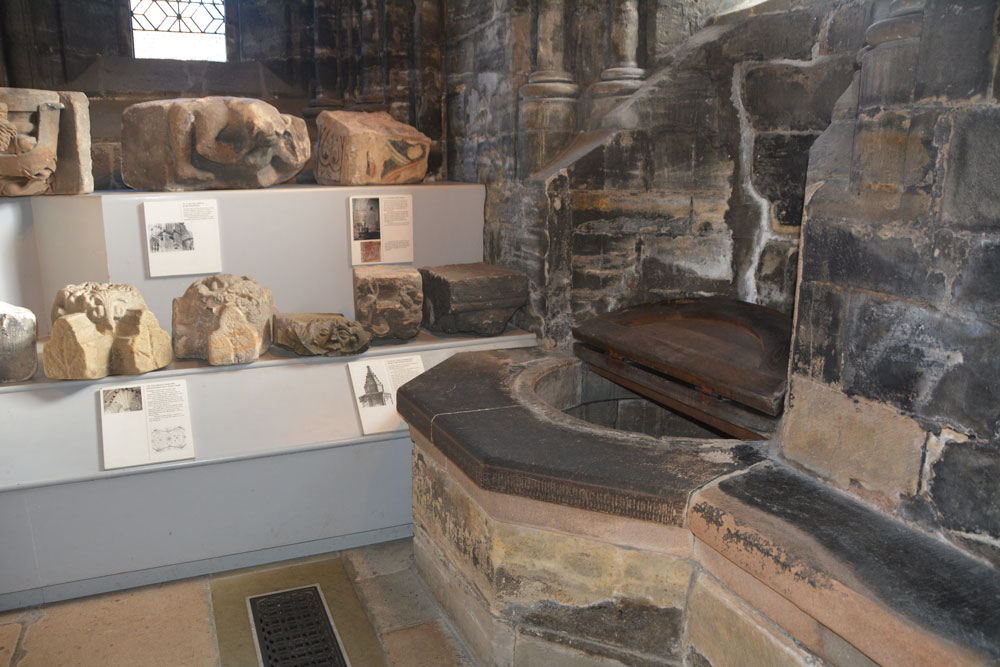Contributory members are able to log private notes and comments about each site
Sites Anne T has logged on trip number: 107 (View all trips)
View this log as a table or view the most recent logs from everyone
Kelvingrove Museum and Art Gallery
Trip No.107 Entry No.4 Date Added: 15th Nov 2018
Site Type: Museum
Country: Scotland (North Lanarkshire)
Visited: Yes on 29th Oct 2018. My rating: Condition 3 Ambience 3 Access 5

Kelvingrove Museum and Art Gallery submitted by Creative Commons on 13th Mar 2014. Kelvingrove Art Gallery And Museum
Taken from Kelvingrove Park.
Copyright Paul McIlroy and licensed for reuse under this Creative Commons Licence
Site in North Lanarkshire Scotland
(View photo, vote or add a comment)
Log Text: Kelvingrove Museum, Glasgow: After Glasgow Cathedral and the Govan Stones, I found the exhibition of Scotland's Early People a little small and disappointing, but what they had on display was interesting. Best items on display for me were the beaker found when they excavated Temple Wood in Kilmartin and a wooden ladder from a crannog. And of course the rock art stone Andy B was photographed with!
The Govan Stones
Trip No.107 Entry No.3 Date Added: 8th Nov 2018
Site Type: Museum
Country: Scotland (North Lanarkshire)
Visited: Yes on 29th Oct 2018. My rating: Condition 3 Ambience 5 Access 5

The Govan Stones submitted by joedkins on 19th Jun 2011. Hogback stone in Govan Old Church, Glasgow
(View photo, vote or add a comment)
Log Text: The Govan Stones, Govan Old Church: We only found out about this exhibition/display through a chance email to Glasgow Life, enquiring if St Mungo's Museum of Religious Life and Art next to Glasgow Cathedral had any early Christian stones we could see and photograph. They replied 'no' but told us about The Govan Stones. With only a few days to go before the exhibition closed for the winter on 31st October, we rushed to see it at the first opportunity, and were blown away!
We spent about 2 hours here, wandering around, looking at the stones, hogbacks and the sarcophagus. A guide joined us for part of our visit and put on special lights in which to view the sarcophagus.
I photographed most of the stones, and am still trying to find out more about each one. This exhibition deserves to be much, much wider known than it currently is. It is the best display of early Christian stones that we've seen to date, and I would go again in a heart-beat.
Very, very highly recommended indeed.
Since my visit, I've been in touch with Govan Heritage Trust to find out more information about the stones. They have been immensely helpful and even provided some of the photographs for submission here.
St Mungo's Well (Glasgow Cathedral)
Trip No.107 Entry No.1 Date Added: 7th Nov 2018
Site Type: Holy Well or Sacred Spring
Country: Scotland (North Lanarkshire)
Visited: Yes on 29th Oct 2018. My rating: Condition 3 Ambience 4 Access 4

St Mungo's Well (Glasgow Cathedral) submitted by Anne T on 18th Nov 2018. St Kentigern's Holy Well in the south west corner of the crypt, with the small collection of stones from earlier cathedral buildings to its left hand side, against the east wall of the lower crypt.
(View photo, vote or add a comment)
Log Text: St Mungo's/St Kentigern's Well, Glasgow Cathedral: This Cathedral is also known as Barony Kirk, High Church, Metropolitan Kirk & St Mongo’s. The holy well is in the south eastern corner of the crypt/undercroft, next to a collection of architectural fragments and part of the arcade of the original St Mungo’s tomb.
Whilst we were there, the Cathedral guide repeatedly brought people to the well, if only for a brief look. I had to chuckle (only a little) as the well cover made looked like an old fashioned toilet seat. I’m not sure how deep the well is, even with a light, but I couldn’t see any water in it – it was either very deep or dry.
The only mention of this well in the Church’s guide book is on page 16: “In the south east corner of the crypt is St Kentigern’s Well, from which water was drawn for liturgical use. Also in that chapel is a display of carved stones, including possible fragments from the base of St Kentigern’s Shrine, and a painted stone thought to have come from the cathedral of the 1100s.
Lady Well (Glasgow)
Trip No.107 Entry No.2 Date Added: 7th Nov 2018
Site Type: Holy Well or Sacred Spring
Country: Scotland (North Lanarkshire)
Visited: Yes on 29th Oct 2018. My rating: Condition 3 Ambience 3 Access 5
Lady Well (Glasgow) submitted by KiwiBetsy on 23rd Sep 2006. Site in Renfrewshire The well used to flow from the east bank of the Merchants Park, but when this was converted to the Necropolis, the well became polluted and was closed. In 1836, The Merchants House built a niche on the spot to mark the site of it’s exit from the brae. This was rebuilt in 1874.
(View photo, vote or add a comment)
Log Text: Lady Well, Glasgow: To get to this well, we had to walk through the path to the south of the cathedral leading to the Necropolis, then use a gate at the junction of Wishart Street and Ladywell Street, walking east towards the dead end of this street. The well is to the northern side of Ladywell Street, opposite an entrance into Tennent’s Wellpark brewery. It is dry, and now somewhat delapidated, although people have left offerings of money.
As the Canmore entry reads, Lady Well was “anciently a holy well dedicated to the Virgin Mary, was probably one of the sixteen public wells in Glasgow in 1736. It used to flow from the E bank of the Merchants' Park, but when this was converted to the Necropolis, the well became polluted and was closed. The Merchants' House, in 1836, built a niche on the spot to mark the site of its exit from the brae. This was rebuilt in 1874.”
A small brass plaque reads: “The Lady Well. Restored by Tennent Caledonian Breweries Ltd. 1983.”
